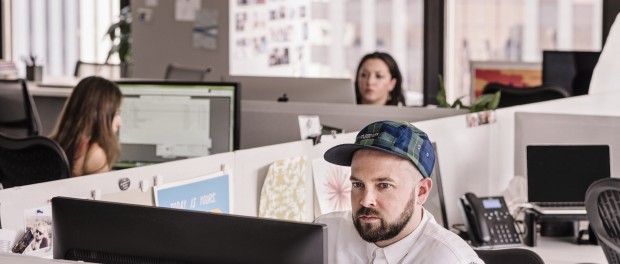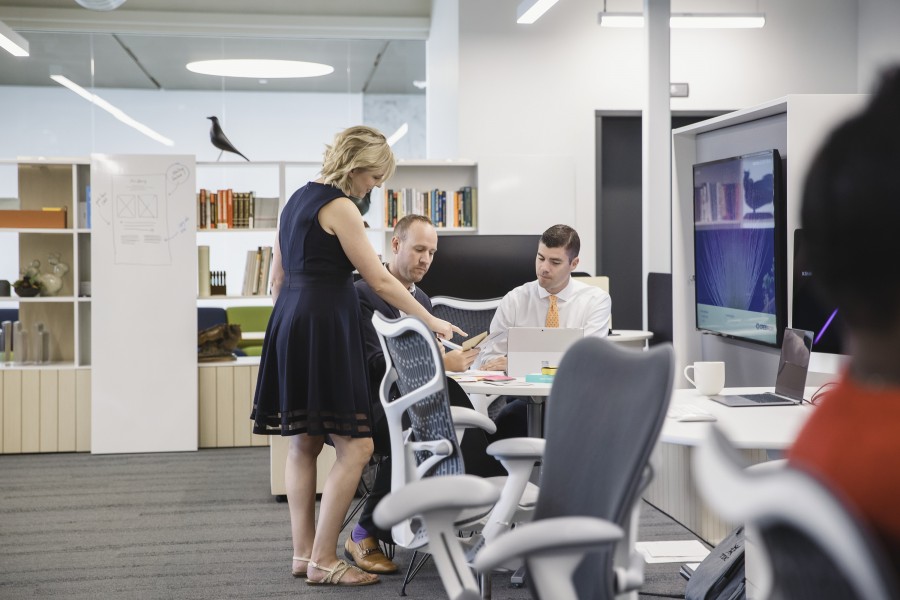Learning to embrace a new reality | Herman Miller shares insightful short-term strategies for returning to the workplace

As we get to grips with a working world where social distancing measures are likely to remain in place for some time to come, we’re beginning to explore the best short term-strategies to help us return to the workplace – whether that’s a traditional office, at home, or somewhere in between. Office and task furniture specialists Herman Miller understand the challenges because like all other businesses, they’re experiencing them, too, and they are researching and learning right along with you.
Here are some ideas employers should keep in mind when creating their short-term back-to-work strategies:
Prioritise Holistic Community Measures
While it will be helpful to increase the physical space between workers (especially those with more stationary work locations) during periods of minimal to moderate transmission risk, the reality is that workplaces are very fluid. For example, we can separate desks by two metres, but we can’t stop people from walking to the bathroom or getting a coffee in the staff kitchen. For this reason, holistic policies like staggering work schedules and limiting the number of employees in a location are likely to be the most effective.
Go with the Flow
Consider the overall “flow” of a space. People move around fluidly; they don’t just stay at individual workstations. Redesigning how people flow throughout a space can impact both the likely distance between people and the amount of time they spend in certain places, thereby improving safety.
One way to start is by using Lean thinking, which inspired HMPS, or the Herman Miller Performance System. Visualize people’s movements and then make adjustments that promote distancing and, ideally, speed up the time it takes for them to complete activities. Historically, this approach has worked for retailers, like IKEA, with high foot traffic. This thinking could be helpful to a wider range of spaces during COVID-19, from manufacturing plants to hospitals and even offices. Technology has a role to play here, too. You can use room scheduling and desk booking tools to dynamically limit access to certain areas in an effort to drive safer behaviours.
Think Beyond Screens
While putting up screens makes sense in certain places – like checkout counters -where social distancing is difficult to achieve, concern arises with headlines like “offices will never be the same” and the idea that 60-centimetre panels between workstations are solutions that will prevent the spread of disease. Recent visualizations of how cough particles behave highlight the potential ineffectiveness of low partitions as a solution, mainly because these particles circulate high in the air. As a furniture manufacturer, Herman Miller could obviously benefit from selling these panels, but they caution against such solutions in many cases unless it is part of a broader strategy.
Use Data to Decide Who Goes Back First
Based on a study on distributed teams and early COVID-19 data, the decision should be made by teams across three key dimensions:
- How much in-person interaction is required for a team to be successful (e.g. document editors vs scrum masters)?
- How well are teams and their work processes enabled from a remote technology perspective (e.g. a developer with a laptop vs an engineer with a desktop)?
- How likely is it that team members will have challenges working from home (e.g. the parent juggling home school duties and work obligations vs someone who lives alone and does mostly heads-down work)?
Support Teams Working Remotely
You can use assessment tools like surveys to determine who continues to work in a distributed manner for a longer period of time, and to pinpoint which teams could stay remote in the long run. Either way, it is critical to ensure these teams are adequately supported for high-performance remote work. Consider adopting agile practices for these teams, including more frequent “stand up” meetings.
Be sure to provide the ergonomic furnishings and integrated technology platforms people need to be comfortable and productive while working from home. Then, outfit your physical office with the right furniture and tools to enhance collaboration with remote colleagues.
Over-communicate
During any crisis or period of above-average change, organizations need to embrace over-communication. Consider US President Franklin D Roosevelt’s fireside chats during the Great Depression and World War II. These informal radio updates brought people comfort and boosted confidence during a time of great crisis. Create a communication platform that allows you to efficiently broadcast leadership videos on key change management topics and also gives employees a chance to have a dialogue about various issues.
While the Herman Miller team members specialise in the built environment, they advocate for behaviour change as the most critical factor in keeping people healthy. And while the environment can be a significant catalyst for changing behaviour, the environment alone cannot keep people safe. Creating policies and a culture that makes it easy for people to stay home is the most effective method of fighting infection risk. The insights they’ve gained during this crisis form the basis of these useful recommendations, along with over 50 years of research about people and the ways and places they work.



